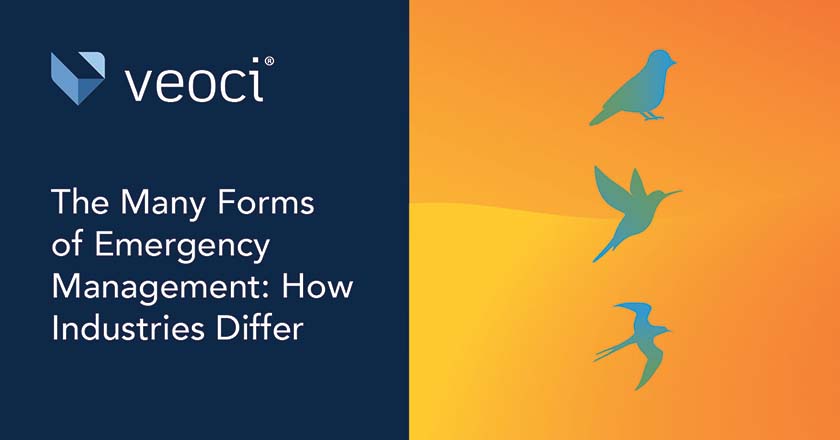From a high-level, emergency management may look pretty uniform in the industries it shows up in. But when you squint and really analyze the practice throughout different sectors, you start seeing major differences.
Emergency management, its purpose, its functions, its hierarchy, and its tools all vary depending on who you’re talking to, and that’s because of the unique history each industry has with its emergencies and disasters.
Many programs were shaped by the events they first responded to. Different standards were set across industries, and that’s created a vivid landscape at the macro level.
Let’s take a deeper look into how these differences came about, and what each sector can do to make their programs more robust.
Emergency Management for Governments and Municipalities
Federal government agencies and local jurisdictions are the main components of government emergency management programs. Often, the two sides share the power in emergency situations. In past historical events, the responsible party was often a toss-up. Hurricane Katrina was a defining moment in the government emergency management space, largely due to the fact that the distribution of responsibility was unclear for most of the response.
Federal involvement has proved to be tricky in recent years. Natural disasters, especially those that hit densely populated areas, have become increasingly more violent and frequent. Mobilization at the federal level is more complicated than at the local or state level, and federal involvement can lead to a response that doesn’t address the current situation quickly enough.
Federal agencies can struggle to respond before the first 72 hours of a disaster. This downtime has spurred a push towards individual and jurisdictional responsibility, especially for small or moderately sized events, and surprise weather events that grant less time to preparedness.
The most robust emergency management programs in government, some would argue, belong to local governments. Local agencies have a better understanding of their communities and their needs, their investment in resources, and dedicated funding to finance salaries and resource procurement. Other organizations can look to local and municipal governments’ thorough programs as an example of good emergency management.
Higher Education Emergency Management
Higher education, when compared to governments, has a much more recent history with emergency management. The Virginia Tech shooting in 2007 was a pivotal moment for the industry, sparking the need for better emergency management.
Higher Education emergency management poses an interesting gray area for its practitioners: how much responsibility do their organizations hold for their adult students. Students have a responsibility for their own wellbeing, but are also highly reliant on their institutions for essentials, like food and water.
Schools also have to partner with local governments and coordinate their response to local, community-based emergencies with government agencies. Colleges and universities also have to wrestle with privacy laws and FERPA when handling their student’s personal information, a fact that can add a wrinkle to certain emergency management operations.
The COVID pandemic introduced another facet into higher education emergency management programs: maintaining safety and well-being through virtual learning. It was difficult for schools to gauge the wellness of their students over conferencing tools. The definition of each institution’s responsibilities changed seemingly overnight, and emergency management programs throughout higher education had to reform their procedures to fit this new understanding.
Enterprise Risk Management
Emergency management within enterprise and private business is where the differences in the practice make themselves most visible.
Companies need to ensure their essential business functions continue through crises; additionally, once lives are protected, a focus on profitability in an emergency situation also takes hold. Emergency managers and other response professionals in this space have to secure insurance coverage and mitigate the downtime losses of their organizations as well. Unlike governments, companies often have risk managers to ensure the continuity of operations during a crisis.
OSHA is an important part of corporate emergency management development too, as the federal agency has established regulations and recommendations for organizations to incorporate into emergency, crisis, and incident programs.
Organizations have always to account for liabilities in an emergency situation, a condition that led to more comprehensive programs through private business. Companies also have a reputational risk to consider with every situation. A showing of strength conveys reliability and the ability to bounce back quickly, remain profitable to stakeholders, and keep employees paid.
Birds of a Feather
Emergency management takes different shapes throughout all industries. Some industries focus more on certain functions while other considerations are absent in most other spaces.
The most robust programs address the uncertainty inherent to emergencies head-on to assign responsibility, dole out tasks, and communicate effectively with partners. Organizations, regardless of their maturity or focus, should utilize the tools available to all emergency management professionals to make their programs as comprehensive as possible.








